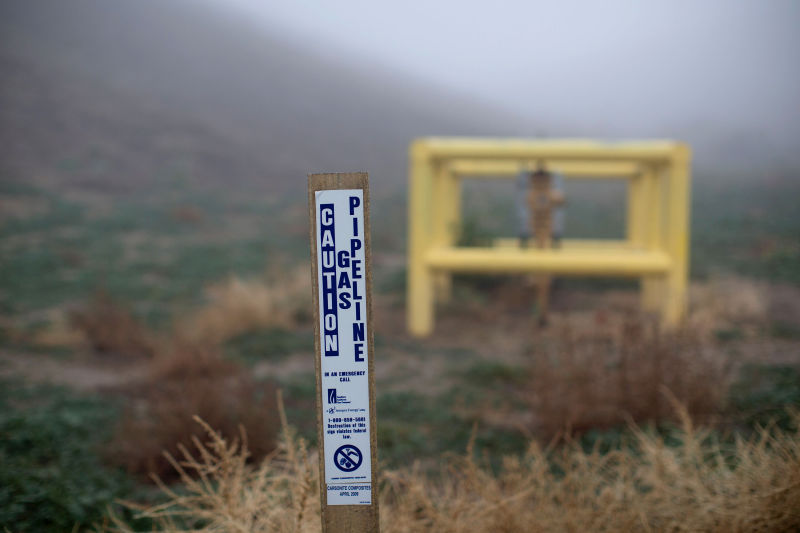Tucker points out that SoCalGas has balanced supply and demand through cold and warm weather, even as the company has reduced the amount of gas stored in the field to less than one-fifth the total capacity. “It’s not worth the risk of reopening the facility, based on the fact that we don’t need the capacity.”
But SoCalGas’s operations manager, Rodger Schwecke, asserts that the bigger risk is in keeping the gas field closed.
“It keeps me up at night wondering because a single day, a single incident could have a problem,” he told state legislators last month. “When you live on the edge, one small step and you can fall.”
SoCalGas says that happened during a cold snap in January, when the company withdrew small amounts of gas from Aliso Canyon on two days. The company has said it couldn’t schedule enough gas through pipelines fast enough to meet peak demand.
An adviser to L.A. County is skeptical about that claim.
“There was more gas scheduled [for delivery] on the prior two days than there were on those two days,“ says EES Consulting project manager Steve Andersen, who has reviewed reports and data related to the field. “We don’t know why that is. We’d need more information from them to figure out that and to figure out if there was some hourly issues, something that happened within the day, that caused them to need to withdraw gas.”
Environmental and watchdog groups have pressed the PUC for more information about that January cold snap. Hourly demand information is confidential, according to SoCalGas and its regulator. They won’t release it, though the California Public Utilities Commission says it is looking into the incident.
Critics also argue that SoCalGas can do more to reduce demand for gas, even on very hot and very cold days.
Still, the gas company isn’t alone in counseling caution: Regulators do, too.
At a hearing in Sacramento, the CPUC’s energy division chief, Ed Randolph, pointed out that the small amount of gas at Aliso Canyon is under less pressure in the storage field, meaning, “You can withdraw less gas at any moment in time.”
Randolph suggested that, too, raises risks of brownouts.
“The other fear is if you have an extended heat wave and you’re withdrawing day after day after day, there’s no ability to reinject in the field, and then use that for a heat wave later in the summer,” Randolph says.
With hot summer days looming, the CPUC is expected to once again weigh in on the risks for meeting weather-related energy demands — as it has this past winter and summer.
And the state’s Department of Oil, Gas, and Geothermal Resources, in consultation with the CPUC, is considering whether it is safe for SoCalGas to reopen and operate about a third of the wells at the Aliso Canyon field.
“The first decision we have to make is, based on the facts and the investments and the repairs that have been done, is the facility safe enough to open?” says CPUC Executive Director Tim Sullivan. “The second question is, does it make sense to have this facility here in the long run? And decisions in the short run have nothing to do with decisions in the long run.”
The CPUC is just beginning an investigation on whether Aliso Canyon is necessary, and if so, at what capacity. No answer is expected on that second question until at least the middle of next year.
